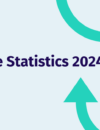
‘Hey guys, this is Sam. He’s our new software engineer.’ It’s a simple enough sentence – but one littered with gender pronouns that could instantly make Sam feel alienated and uncomfortable on his first day at work.
How we’re addressed is a deeply personal issue that plays a key role in our identities. But everyday, we speak in a way that could easily offend those who don’t identify as male or female.
Our language is entrenched in gender pronouns that exclude those who identify on a binary scale as neither male or female and prefer neutral terms such as ‘they’.
But using gender inclusive language doesn’t have to be a huge challenge. Here’s our tips for getting it right at every stage.
Getting gender pronouns right in the workplace
Before you meet
Don’t wait until you meet someone to panic you’re addressing them inappropriately. Consider including a form at the job application stage that asks applicants to confirm how they like to be identified. This simple approach means both parties can feel confident and comfortable that there will be no risk of using the wrong gender pronoun and causing awkwardness during the interview.
Introducing to others
When welcoming a gender fluid individual to your business, take the time to introduce them to their colleagues using the correct gender pronoun. For example: ‘This is Alex. They previously worked at company xyz. Please make them feel welcome’. This immediately informs others how to address them without making it into a big deal.
Company profiles
It’s likely that your workplace has an intranet with employee profiles, but do the profiles include individuals’ preferred prefix? Many gender fluid individuals prefer the prefix ‘Mx’, so include this as an option alongside the likes of ‘Mr’, ‘Mrs’ and ‘Miss’.
Training
Educating others is key to creating a truly understanding and inclusive work environment. Consider hosting workshops that cover how to address employees; starting a conversation about our language and its implications is crucial to encouraging employees to be more thoughtful when talking at work. Plus it will likely spark wider conversations on how we can make workplaces more inclusive generally – and that can only ever be a good thing.
Ask
If you’re not sure how best to address someone, ask. It may feel uncomfortable, but it’s far better than getting it wrong, causing hurt and requiring someone to speak up to correct you. And, by asking, you’re taking the time to understand that person and get it right; a gesture that can go a long way to making someone feel accepted at work.
To find out how to make your workplace more diverse, get in touch.





